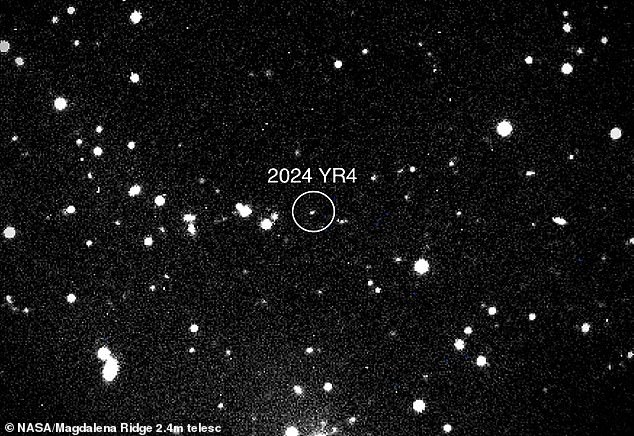
NASA Alerts on 2032 ‘City Killer’ Asteroid Approaching Moon’s Orbit
NASA Raises Concerns Over Potential Moon Impact by ‘City Killer’ Asteroid 2024 YR4
Asteroid 2024 YR4, once feared as a “city killer” on a collision course with Earth, is now more likely to strike the moon by 2032, NASA warns. Updated calculations reveal a 4.3% chance of impact on December 22, 2032. While the asteroid poses no threat to Earth, a lunar collision could create a visible flash and eject debris into space.
Key Details:
- Size: Comparable to a Boeing 747 (174–220 feet wide).
- Potential Impact: A strike on Earth would unleash energy equivalent to 7.7 megatons of TNT, creating a 3,000-foot crater. For the moon, the collision would form a new crater and offer scientists real-time data on lunar impacts.
- Observation Challenges: Currently 30 million miles away, the asteroid is tracked via NASA’s James Webb Space Telescope (JWST) until it becomes visible again to Earth-based telescopes in 2028.

Image: 2024 YR4 captured by the Magdalena Ridge telescope in January 2025.
Why the Moon?
The asteroid’s elliptical orbit around the sun will bring it back toward the inner solar system in 2032 at speeds exceeding 30,000 mph. NASA’s refined trajectory models, based on JWST data, suggest a slim but notable risk of a lunar strike. Molly Wasser of NASA’s Planetary Defense Coordination Office notes impact probabilities fluctuate as new data emerges.

Diagram: The asteroid’s orbit (purple) crosses Earth’s path (blue), with a close approach in 2032.
Historical Context:
2024 YR4 mirrors the size of the Tunguska asteroid, which flattened 830 square miles of Siberian forest in 1908. A lunar strike would not alter the moon’s orbit but would provide unprecedented insights into crater formation.

Photo: The Tunguska impact site, 1908.
Ongoing Monitoring:
After its discovery in December 2024, initial fears of an Earth impact peaked at a 3.1% probability but were later downgraded. Current focus remains on tracking its path through space.
Planetary Defense Strategies:
While 2024 YR4 isn’t an immediate threat, NASA explores asteroid deflection methods:
- Kinetic Impactors: Spacecraft collisions to alter orbits.
- Nuclear Explosives: Risks fragmenting asteroids.
- Gravity Tractors: Using a spacecraft’s gravity for gradual course changes.

Image: JWST’s April 2025 observation of 2024 YR4.
Though the odds remain low, 2024 YR4 underscores the unpredictability of near-Earth objects. As Wasser states, “Vigilance and continued observation are critical.” The world will await 2032—and clearer data in 2028—to learn if Earth’s moon faces its first observed asteroid impact.
Quick Facts:
- Discovery: December 27, 2024
- Speed: 30,000+ mph
- Moon Impact Date: December 22, 2032
- Current Impact Probability: 4.3% (1-in-23 chance)


